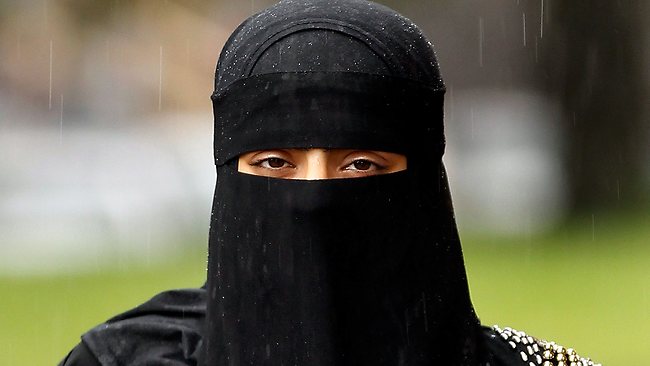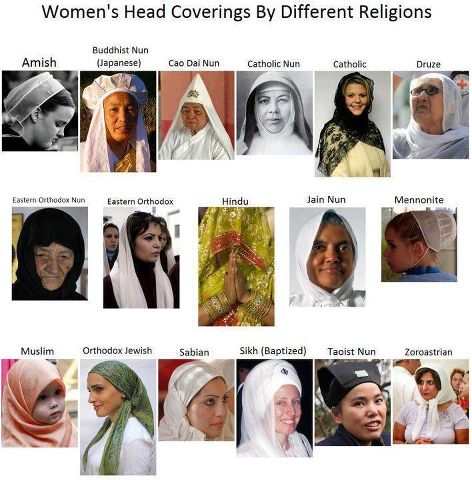
Unveiling the Burqa
By Nazlee Salami
I gazed down at the dark-green headscarf that lay gently in my hands. My eyes traced its ornate gold patterns. Parked just metres away from the Holland Park Mosque, I carefully wrapped it around my head. I checked myself in the car mirror, restraining any loose tendrils of hair. I stopped to smile at the reflection before me, as it reminded me that even though I am a woman of the West, I will always be a Muslima…
For many Muslim women, however, covering themselves this way is more than just a sign of respect. It’s a way of life, an act of worship. But sadly, one that seems to be highly misunderstood in the non-Muslim world. In 2014, Australia temporarily banned the burqa from being worn in Parliament. Then Prime Minister Tony Abbot said on national television that he finds it “a fairly confronting form of attire”. That’s despite him stating in the same address that no one wearing a burqa has actually ever entered the Parliament. What’s more, only a handful of Muslim women in Australia even wear the burqa or the niqab, with the majority wearing the standard hijab. Earlier, in 2010, France banned the burqa from being worn in public, but not temporarily. And just this year, the swimsuit version of the burqa, known as the “burquini”, was banned from being worn in some French beaches.
I met with Imam Uzair Akbar of the Holland Park Mosque to understand things a little better. When I asked him what the Holy Quran says about the dress code of women, he started off by saying that “Men are also a part of the dress code. The focus tends to be upon females. It is stipulated in the Quran that both men and women’s dress should reflect modesty. Men should cover parts that are attractive to women and women should cover parts that are attractive to men.”
The Imam went on to explain the confusion over why some Muslims wear just the hijab, while some wear a niqab or a burqa. It seems the short answer is that it comes down to time, place and personal choice. “Times have changed and certain people from certain countries have different standards of modesty.” He continued, “Modest dressing is there to guard the female from evil. If a female doesn’t feel safe because of the beauty Allah has granted her, then it is her choice to cover her face. It’s all about safety, dignity and honour.”
Elaborating on the socio-cultural platform of the burqa was Dr. Maryam Jamarani from the University of Queensland. Dr. Jamarani specialises in the field of World Religion and Intercultural Communication. She said, “I don’t believe there is just Islam. We have Islams. All religions should be thought of as in plurals. The ‘s’ represents the different ways of practicing the religion. The practice becomes quite reflective of a person’s culture. Their culture is a sense of their identity and they take it with them wherever they go.”
In the words of Imam Akbar, “It seems like the wider community thinks that Islam is the religion that has introduced this [hijab], but we can see this in different religions before. The nuns are a clear proof.” According to Dr. Jamarani, it goes back even further. She used ancient Persia as an example. Back then, highly regarded people such as aristocrats would cover their heads or faces. But lower levels of society were not allowed to, because it was a sign of being distinguished. This resonates with a comment made by the Imam. “Even the Queen covers herself to show modesty,” he said, relating the practice to the very day.

Women’s head coverings by different religions. Source: Pinterest.
Indeed, modesty was the reason that drove Muslim woman Najibah* to wear the niqab 2 years ago. Najibah was born in Australia to a Pakistani-Indian family. “My inspiration was the story of the prophet’s daughter Fatima…her modesty was so great,” she told me when we spoke. Her only regret, she told me, was that she didn’t wear the niqab sooner. “I missed the rewards from Allah.” Those words highlight the other main reason some women cover their faces: the increased reward for extra piety. This non-compulsory act is known in Islam as mustahab. It is a personal choice.
I met with another Muslim woman named Amalina. She’s from Malaysia and has been living in Australia since 2012. Amalina wears only the hijab. But her views echo those of Najibah’s. “The practice is more towards modesty and women’s protection. To me, it is honour and protecting yourself from the evil eye.” She continued, “Islam is not a religion that oppresses people. You are told what is compulsory, but it’s up to you.” She went on, “I am quite frustrated because people may be overreacting to the media. Women wearing a burqa are portrayed aggressively. They are shown holding a sniper [gun]. They are associated with violence and terrorism.” This, she believes, is because a woman covered in cloth is an easily identifiable referent of Islam.
So how can we go about reducing misunderstanding of the burqa at a time when Islamophobia is rife? Well, according to Dr. Jamarani, each and every one of us can play a role. “Don’t be afraid of the unknown and judge it through cultural lenses.” As for how the Muslim community ought to respond, Imam Akbar believes that “We need a one statement from the Muslims to reduce misunderstanding in the wider community. We need contemporary scholars on the same platform as well to spread the message.” On the same page, Najibah sees education as a key player. “Everyone needs educating about what it is and why we do it…I guess some people just don’t agree with it. But that’s not going to stop me,” she said proudly.
*Real name not used.
Nazlee Salami
An aspiring journalist with a love for culture, people and the planet! I'm passionate about giving a voice for the voiceless and exploring what's happening around the globe. History, religion, art, music and nature are just a few of the things I love to explore...
